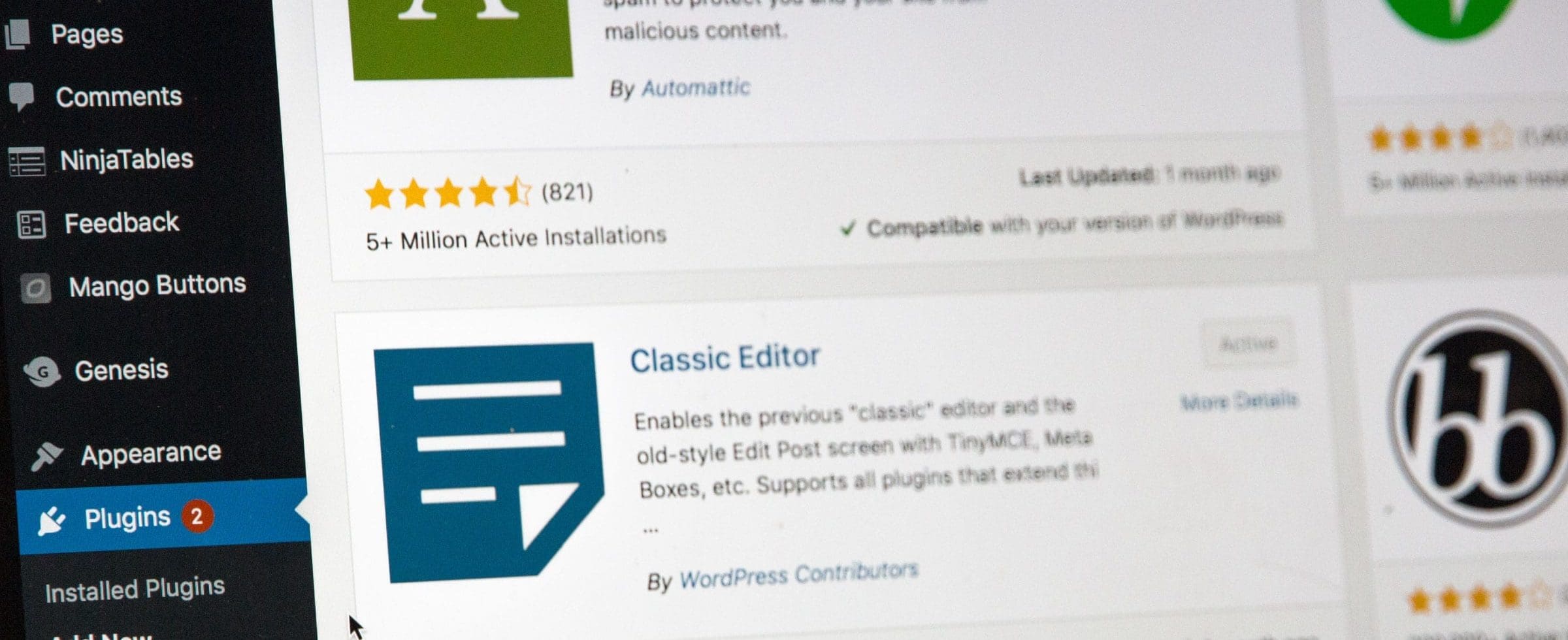It’s no surprise that WordPress is one of the most popular website tools out there nowadays.
In many ways, WordPress has become the Internet. On its open-source content-management system sits 35% of the world’s active websites, and each month WordPress gets 400 million visitors. No other content management system comes close to this market share.
With that market share and being open source, comes options and a whole lot of them.
One option WordPress users have to consider is which page builder plugin is best for their projects.
Our team at Reliable PSD can work with just about any WordPress page builder tool, but this is one area where we do play favorites (cough…Advanced Custom Fields, we’re looking at you ????).
Here are some of the most popular and intriguing WordPress page builder plugins to consider for your next website project:
1. Advanced Custom Fields
At Reliable, we’re big fans of Advanced Custom Fields for a few reasons. First, it makes it easy for us to match your designs with a very high level of accuracy. We start by coding the HTML/CSS for your entire project, then test that thoroughly before converting it to a fully custom WordPress theme built using Advanced Custom Fields.
This option makes for a lightweight, fast-loading website that’s also SEO-optimized. Best of all, it makes updates and changes to your website as easy as posting a photo on Instagram or liking that cat meme. No code involved.
But how, you ask?
Within ACF is Flexible Content, the tool that lets our clients (or our clients’ clients) make changes without altering the overall design. Flexible Content is straightforward, and most users catch onto how it works very quickly because it’s simple, with limited options to pick from. Learning how to use something with five buttons is a lot easier than learning how to use something with two hundred, which is part of what makes ACF so great.
But ACF does come with some limitations—it doesn’t necessarily fall into the popular category of drag-and-drop plugins that offer the ability to design things in the browser.
2. Elementor
It’s hard to ignore the popularity of Elementor which has become of the top dogs in the WordPress page builder plugin market.
Its editing interface is conveniently located in the sidebar, allowing users to see the edits in real-time preview after dragging-and-dropping their page elements into place. In-line text editing is also available.
While Elementor is user friendly and a great option for clients looking for a flexible interface and the ability to design in the browser, it suffers from the same issue as most drag-and-drop builders—an incredible amount of additional code is required in order to make these plugins a reality. More code means sluggish load speeds.
3. WPBakery (Visual Composer)
WPBakery, once known as Visual Composer, is one of the most popular page builders on the market and a common feature to premium, pre-existing themes purchased from themeforest.net.
The appeal of WPBakery, like Elementor, is that you can design things in the browser without touching code, meaning you can, for example, create a blank page and add a row to that page, then split that row into 4 columns and put different elements in each column.
You can also re-order rows, columns, and various elements freely, and change the margin, padding, background, etc. of each.
This sounds amazing, but, like its competitors, WPBakery does come with its fair share of drawbacks.
When designing things in the browser on desktop, it can be easy to forget how your drag and drop design is going to look on tablet and mobile. Often times, things will look a bit wonky and if you don’t know any HTML or CSS, it can be a challenge to correct them.
WPBakery also creates excessive lines of code, which can slow down a site. For some people, it can also be a challenge to learn and use well because of the endless amount of options.
4. DIVI
DIVI is one of the longest-lasting builder plugins on the market and has a loyal following and fan base among WordPress users.
It’s shortcode based, so (like most other drag-and-drop plugins) deactivating it will cause your website to fall apart. As a premium plugin, Divi doesn’t offer a free version, but it does offer a lifetime price.
The main drawback with Divi is its interface, which has no sidebar, and the sheer number of customizable features, which can make navigating through the frontend time-consuming. It’s also not as intuitive as other drag-and-drop plugins.
5. Beaver Builder
Many WordPress users love Beaver Builder because of its easy-to-use interface, which is almost like working on a Word document. It’s truly WYSIWYG—what you see is what you get. Pages built using Beaver Builder tend to load faster than those of Elementor or WPBakery, but not as quickly as sites that use Advanced Custom Fields.
Beaver Builder’s content modules don’t allow for Social Media Follow or Native Comments buttons, which could be an issue if you depend on this for new leads. Its ideal user is someone who doesn’t want a steep learning curve and who is comfortable with prefab templates. This one-size-fits-all approach isn’t for everyone though.
6. Gutenberg
It was exciting to see the team at Automattic release the first WordPress native page builder tool, Gutenberg, last year.
It includes a great, user-friendly interface that’s perfect if you’re using a pre-existing theme that comes with it built it.
However, as a developer, it can be incredibly time-consuming to build a new theme from scratch using Gutenberg (more so than any of the page builder tools listed above).
For this reason, we recommend clients interested in Gutenberg opt for Advanced Custom Fields Blocks for Gutenberg, which is a happy marriage of the two tools that will make your developer’s life easier, too.


